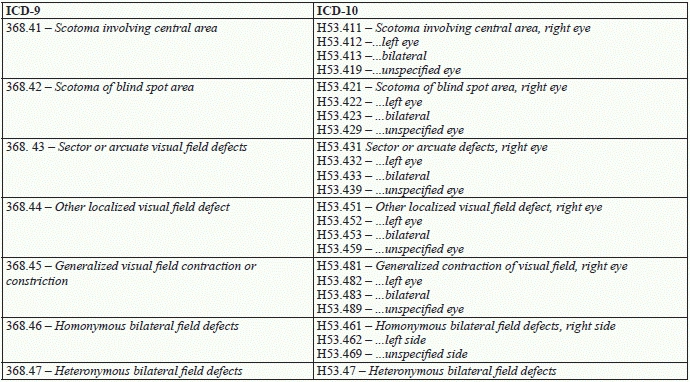More Changes Coming for Visual Disturbances Dx
Recently, you learned about some of the changes coming to diagnosis coding for visual disturbances including amblyopia, diplopia, subjective visual disturbances, and more (see “Check These Visual Disturbances Dx Changes” in Ophthalmology Coding Alert, Vol. 18, No. 8). Read on to learn how your coding for visual field defects, color vision deficiency, night blindness, and other visual disturbances will change when the transition from ICD-9 to ICD-10 takes effect Oct. 1, 2015.
Some of the ICD-9 codes in the 368.xx range (Visual Disturbances) will just get a one-to-one translation in ICD-10. Example: There will remain only one option for describing a diagnosis of protan defect (protanomaly) – under ICD-9 you would report 368.51, and under ICD-10 you would report H53.54
Other codes have been expanded to show laterality – whether the condition exists in the right eye, left eye, both eyes or an unspecified eye. Example: The single ICD-9 code for scotoma of blind spot area (368.42) has been expanded under ICD-10 to a four-code range (H53.421-H53.429).
Visual Field Defects
Color Vision Deficiency
Night Blindness
Other visual disturbances
Get ready: For more information on the ICD-10 conversion, as well as specific ICD-9 to ICD-10 code bridges, visit https://www.aapc.com/codes/ .




